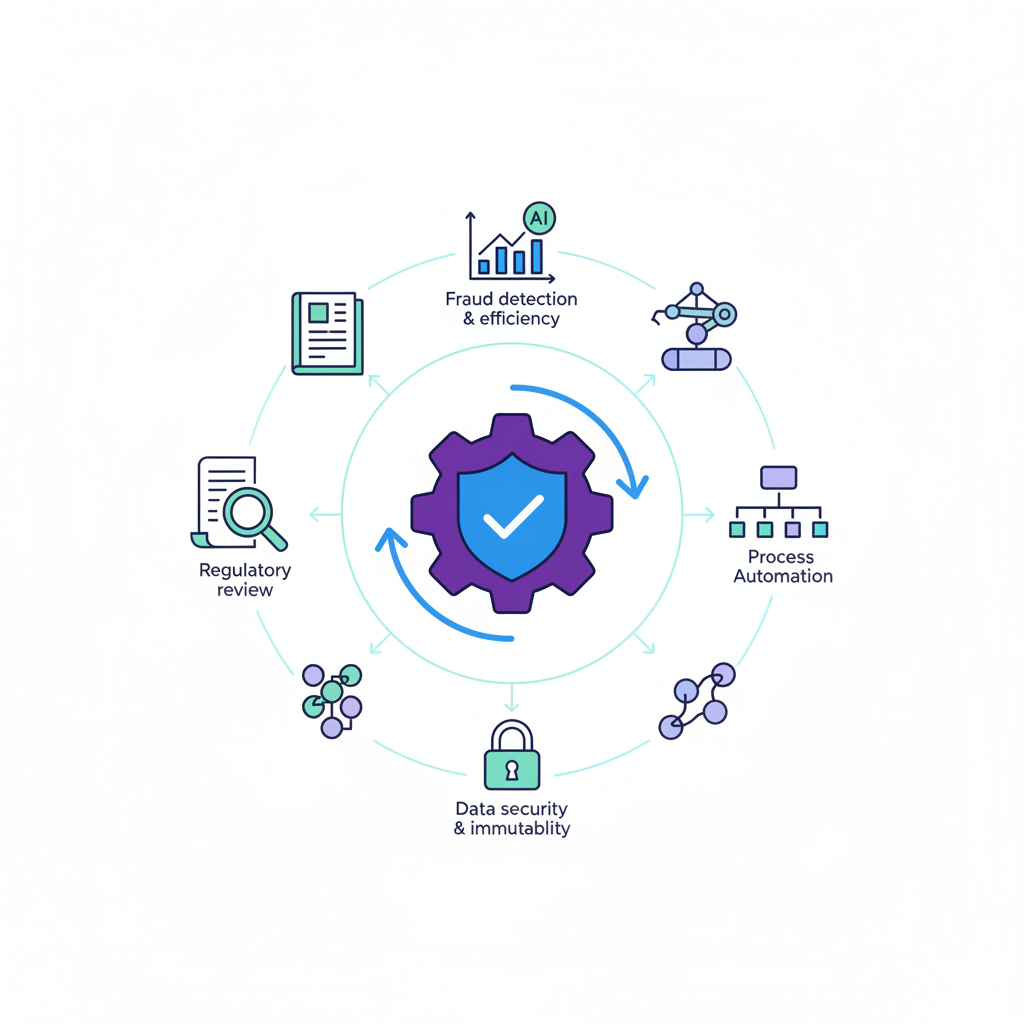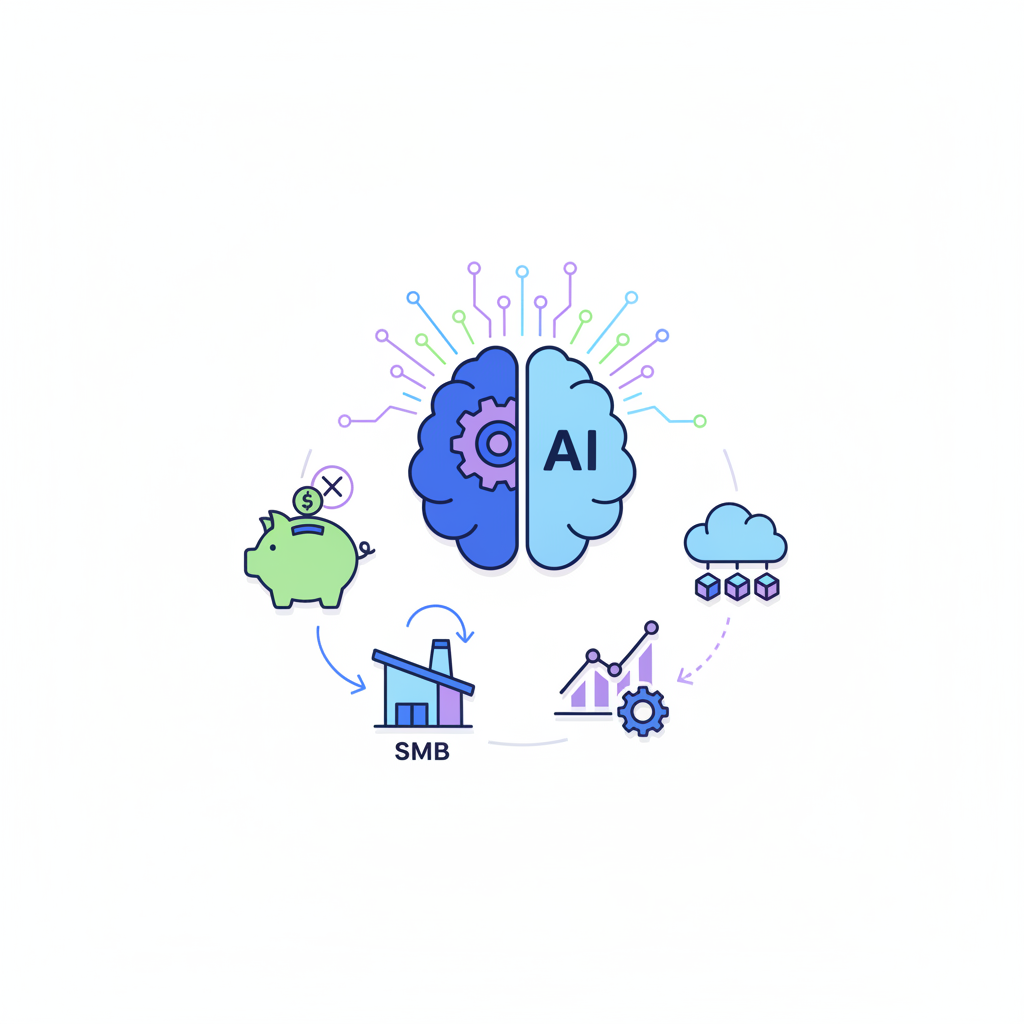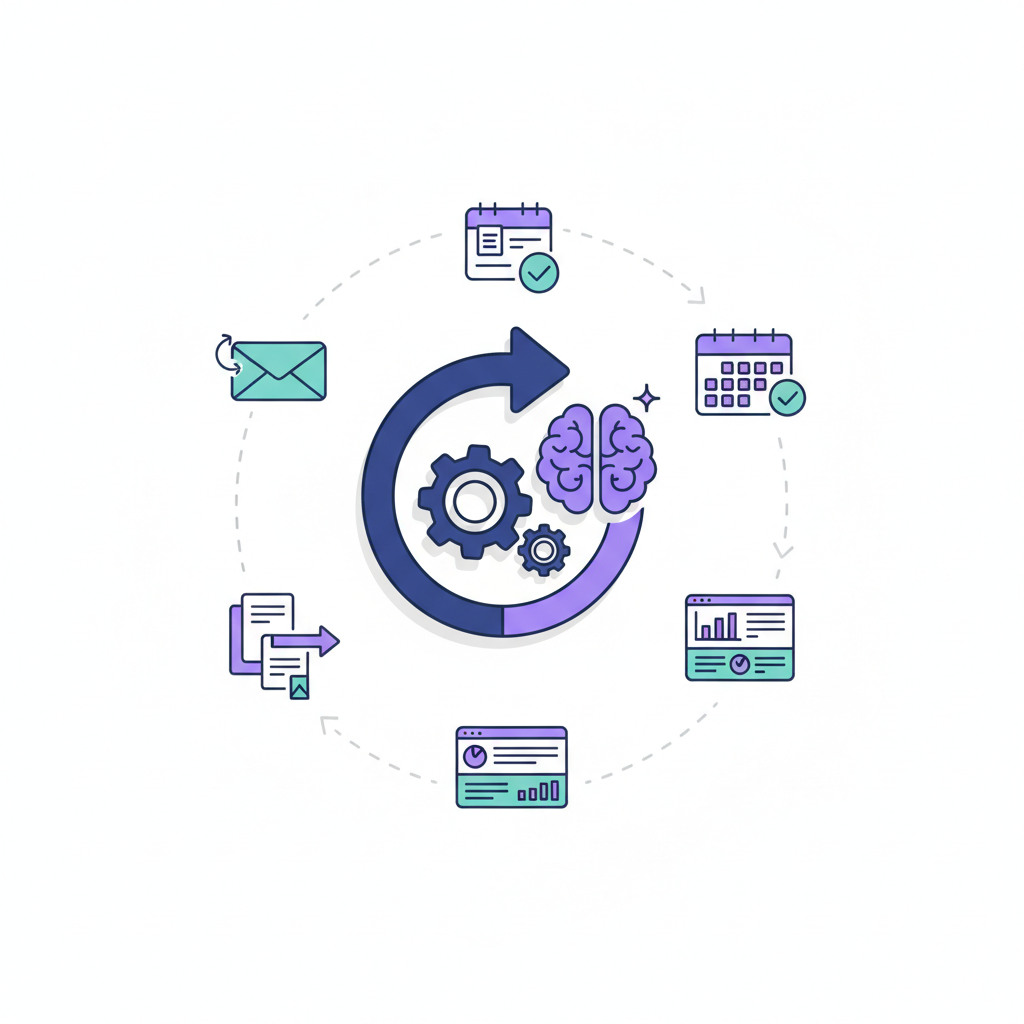Top 10 AI Tools for Restaurants
Explore the top 10 AI tools for restaurants in 2025, including Miso Robotics, Presto Automation, 7shifts, Toast, OpenTable, Infor, Hyphen, Chatbots, Dynamic Pricing, and Punchh. Learn how AI optimizes scheduling, inventory, chatbots, analytics, marketing, and robotics.
The AI Revolution: Transforming the Restaurant Industry
The rapidly evolving restaurant landscape presents a dynamic environment, characterized by increasing competition and ever-shifting consumer expectations. Restaurateurs today face a myriad of challenges, from persistent labor shortages and escalating operational costs to the growing demand for highly personalized customer experiences. In this demanding climate, traditional methods often fall short, leaving many businesses struggling to maintain profitability and relevance. This is where artificial intelligence (AI) emerges as a game-changer, offering innovative solutions to these complex challenges. AI is not just a futuristic concept; it's a practical, accessible technology poised to redefine efficiency, enhance customer satisfaction, and unlock new growth opportunities across the sector.
Artificial intelligence provides a powerful toolkit for modern eateries, enabling them to streamline operations, reduce waste, optimize staffing, and deliver bespoke interactions that foster loyalty. The integration of AI tools for restaurants is no longer a luxury but a strategic imperative for those looking to thrive. This article will explore the top 10 AI tools for restaurants, delving into their specific benefits, practical implementation strategies, and a glimpse into the future trends shaping the restaurant industry AI landscape. By addressing the critical need for specific tool names and practical applications, we aim to provide a comprehensive guide for restaurant owners and managers ready to embrace the transformative power of AI in restaurants.
The AI Revolution in Restaurants: Why Now?
The restaurant industry is at a pivotal juncture, grappling with persistent challenges that demand innovative solutions. Labor shortages continue to plague establishments, making consistent staffing a constant headache, while rising food and operational costs squeeze already thin profit margins. Simultaneously, customer expectations have soared, with diners seeking not just great food but seamless service, personalized experiences, and instant gratification. These pain points are precisely where AI in restaurants shines.
AI technologies are uniquely positioned to address these issues head-on, driving unprecedented efficiency in restaurants and significantly enhancing the customer experience. By automating repetitive tasks, providing data-driven insights, and enabling more responsive service, AI helps businesses overcome operational hurdles. Furthermore, the growing accessibility and affordability of AI technologies mean that these powerful solutions are no longer exclusive to large chains. Businesses of all sizes, from independent cafes to multi-location eateries, can now leverage restaurant operations AI to improve restaurant service, optimize resource allocation, and foster sustainable growth in a competitive market.
Understanding AI: Key Categories for Restaurant Applications
To fully appreciate the impact of AI in the culinary world, it's helpful to understand the foundational categories of AI that translate into practical restaurant solutions. While there isn't a universally agreed-upon "four types of AI tools," several core branches are highly relevant for AI applications in restaurants.
Firstly, Machine Learning (ML) is at the heart of predictive capabilities. It allows systems to learn from data, identify patterns, and make predictions without explicit programming. In restaurants, ML powers demand forecasting, inventory optimization, and personalized marketing. Secondly, Natural Language Processing (NLP) enables computers to understand, interpret, and generate human language. This is crucial for AI chatbots, voice ordering systems, and sentiment analysis of customer reviews. Thirdly, Computer Vision allows AI to "see" and interpret visual information from images and videos. Its applications include food quality control, waste detection, and monitoring kitchen safety. Lastly, Robotics involves the design and operation of robots to perform physical tasks. In restaurants, this translates to automated food preparation, serving, and cleaning. These types of AI tools collectively demonstrate how restaurants use AI to create comprehensive AI solutions for restaurants, driving innovation across various operational facets.
1. AI-Powered Scheduling & Labor Optimization
Managing staff schedules in a restaurant is a complex puzzle, often leading to overstaffing, understaffing, and increased labor costs. AI-Powered Scheduling & Labor Optimization tools leverage sophisticated algorithms to predict demand accurately and optimize staff schedules, ensuring the right number of people are in the right place at the right time.
These tools offer key features such as predictive scheduling based on historical sales data, weather patterns, and local events; intuitive shift management interfaces; automated compliance checks for labor laws and breaks; and seamless staff communication platforms. The benefits are substantial: significantly reduced labor costs by minimizing overtime and maximizing productivity, improved staff retention through fair and predictable scheduling, and overall operational efficiency. For instance, a large chain like Chipotle could use AI for optimal staffing, ensuring peak service during lunch rushes while avoiding unnecessary expenses during slower periods. Pricing/ROI considerations typically involve a subscription model, with potential savings on overtime and understaffing quickly offsetting the general cost range. These systems often offer seamless integration notes with existing POS (e.g., Toast, Square) and HR systems, making adoption straightforward for better labor cost management and staffing and retention through intelligent shift management and automated scheduling.
2. Smart Inventory & Waste Reduction
Food waste is a significant drain on restaurant profits and a major environmental concern. Smart Inventory & Waste Reduction tools utilize AI to revolutionize how restaurants manage their stock, from procurement to plate. These systems provide accurate demand forecasting, automate ordering processes, and meticulously track waste.
Key features include real-time inventory monitoring through sensors and POS integration, predictive ordering that anticipates future needs based on sales trends and seasonality, automated spoilage alerts for perishable items, and detailed recipe costing to understand the true cost of each dish. The benefits are clear: a significant reduction in food waste, leading to substantial cost savings and improved profit margins. Imagine a restaurant reducing food waste by 20% in its first year using a specific AI-driven inventory software, directly impacting its bottom line. Pricing/ROI considerations highlight the direct impact on food costs, with typical subscription models offering a rapid return on investment. These tools often feature robust integration notes with suppliers for automated reordering, existing POS systems for sales data, and accounting software for comprehensive financial oversight, making them essential for effective inventory management, helping reduce waste, and optimizing food cost management within restaurant operations AI.
3. AI Chatbots & Customer Service Automation
In today's fast-paced world, customers expect instant responses and seamless interactions. AI Chatbots & Customer Service Automation tools provide AI-driven chatbots that can handle a wide array of customer inquiries, from taking orders and answering frequently asked questions to managing reservations and providing personalized recommendations.
Key features include natural language understanding, allowing customers to speak their orders conversationally without rigid commands; 24/7 availability, handling orders even during off-peak hours; personalized upsell suggestions based on order history or popular pairings; and multi-channel support across websites, social media, and even phone systems. The benefits are manifold: an enhanced customer experience through quick and accurate responses, a reduced staff workload by automating routine tasks, and increased order accuracy, minimizing errors. Consider a quick-service restaurant using a chatbot for drive-thru orders, dramatically speeding up service and reducing human error. Pricing/ROI considerations often involve a cost per interaction model, with the improved customer satisfaction leading to increased repeat business and loyalty. These systems offer crucial integration notes with a restaurant's website, social media platforms, phone systems, and POS, ensuring a smooth flow from order to fulfillment and making them invaluable for AI chatbots, efficient reservations management, and overall efforts to improve restaurant service through customer service automation.
4. Predictive Analytics for Menu & Pricing
Optimizing a menu and its pricing is an art and a science. Predictive Analytics for Menu & Pricing tools utilize AI to analyze vast amounts of sales data, customer feedback, and market trends to provide actionable insights for optimizing menu items and pricing strategies, maximizing profitability.
Key features include advanced menu engineering, identifying high-profit, high-popularity items and suggesting adjustments for underperformers; dynamic pricing analysis that can recommend price changes based on demand, time of day, or competitor pricing; accurate sales forecasting to anticipate future demand for specific dishes; and detailed ingredient cost tracking to ensure menu prices reflect current expenses. The benefits are clear: maximized revenue during peak times, reduced food waste by incentivizing the purchase of items with limited shelf life, and data-driven decision making that removes guesswork. Imagine a restaurant using AI to identify an underperforming menu item, then adjusting its ingredients or price, leading to a 15% increase in its profitability. Pricing/ROI considerations directly impact revenue and margins, making these tools a strategic investment. They offer essential integration notes with POS systems for sales data, inventory management for cost tracking, and CRM for customer preferences, driving effective menu analysis, smart pricing analysis, and robust restaurant data analysis for ultimate profit optimization.
5. Customer Feedback & Review Analysis
In the digital age, online reviews and customer feedback are paramount to a restaurant's success. Customer Feedback & Review Analysis tools leverage AI to sift through mountains of customer reviews, social media mentions, and direct feedback, extracting actionable insights that human analysis often misses.
Key features include sophisticated sentiment analysis, which gauges the emotional tone of reviews to identify positive and negative trends; automated trend identification, pinpointing common complaints or praises across multiple platforms; automated response suggestions, helping staff craft timely and appropriate replies; and competitive benchmarking, allowing restaurants to compare their performance against rivals. The benefits are profound: an improved online reputation through proactive engagement, better service quality by addressing pain points quickly, and proactive problem-solving before issues escalate. For example, a restaurant might use AI to quickly identify a recurring complaint about slow service on Tuesday evenings and implement a staffing adjustment. Pricing/ROI considerations emphasize the value of reputation management and its direct impact on customer retention and acquisition. These tools typically offer seamless integration notes with platforms like Google My Business, Yelp, TripAdvisor, and various social media platforms, providing a holistic view of customer sentiment and enabling swift, data-backed improvements to the dining experience.
6. AI-Driven Marketing & Personalization
Generic marketing campaigns often fall flat in a crowded market. AI-Driven Marketing & Personalization tools empower restaurants to create highly targeted marketing campaigns and deliver truly personalized customer experiences, fostering deeper engagement and loyalty.
Key features include sophisticated customer segmentation, dividing patrons into groups based on dining habits, preferences, and spending; personalized offers and promotions delivered at the optimal time; dynamic content creation for emails and ads that adapt to individual customer profiles; advanced ad optimization across digital channels; and robust loyalty program management that rewards specific behaviors. The benefits are significant: increased customer engagement through relevant communications, higher conversion rates on promotions, and stronger brand loyalty built on personalized interactions. Picture a coffee shop sending personalized promotions for a customer's favorite latte on a rainy morning, based on their past purchase history and local weather data. Pricing/ROI considerations focus on marketing spend efficiency and the direct increase in sales and customer lifetime value. These tools offer crucial integration notes with CRM systems, email marketing platforms, social media advertising, and POS systems, creating a cohesive strategy for marketing and content creation, enhancing customer loyalty, and driving effective personalized marketing.
7. Kitchen Automation & Robotics
The kitchen is the heart of any restaurant, and Kitchen Automation & Robotics are bringing a new level of efficiency, consistency, and safety to this critical area. These tools involve the deployment of robots and automated systems for various tasks, from food preparation and cooking to dishwashing.
Key features include specialized robotic fry cooks, such as Miso Robotics' Flippy, which can handle repetitive tasks like flipping burgers or frying chicken with precision; automated beverage dispensers that ensure consistent drink quality; robotic pizza makers that can assemble and cook pizzas rapidly; and advanced dishwashing robots that streamline cleanup. The benefits are transformative: unparalleled consistency in food quality, dramatically increased speed of service, reduced labor costs by automating repetitive and often strenuous tasks, and improved hygiene standards. A real-world example is Miso Robotics' Flippy, which has been successfully deployed in fast-food kitchens, demonstrating its ability to maintain quality and speed. Pricing/ROI considerations involve a high initial investment, but this is often offset by long-term labor savings and increased throughput. These systems require careful integration notes with existing kitchen management systems and order systems to ensure smooth operation, representing a significant leap forward in kitchen automation, restaurant operations AI, and the broader adoption of robotics in restaurants.
8. AI for Food Safety & Quality Control
Maintaining stringent food safety and quality standards is non-negotiable for any restaurant. AI for Food Safety & Quality Control systems provide an advanced layer of monitoring and assurance, leveraging technology to prevent contamination, ensure proper handling, and maintain consistent product quality.
Key features include computer vision systems for real-time ingredient inspection, detecting defects or foreign objects before they enter the cooking process; automated temperature logging for refrigerators, freezers, and cooked food, ensuring compliance with safety regulations; continuous HACCP (Hazard Analysis and Critical Control Points) compliance monitoring, alerting staff to potential breaches; and even advanced allergen detection capabilities. The benefits are immense: a dramatically reduced risk of foodborne illness, consistent product quality across all dishes, and seamless regulatory compliance, protecting both customers and the restaurant's reputation. Imagine AI cameras detecting cross-contamination risks in a prep area instantly, alerting staff before an incident occurs. Pricing/ROI considerations highlight the value of risk mitigation, brand protection, and the avoidance of costly compliance fines or lawsuits. These systems typically require integration notes with temperature sensors, existing kitchen equipment, and compliance reporting tools, creating a robust, proactive approach to food safety and quality control.
9. AI-Powered Voice Ordering Systems
The demand for speed and convenience in ordering has never been higher, especially in quick-service and drive-thru environments. AI-Powered Voice Ordering Systems are revolutionizing how customers place orders, offering a seamless, hands-free experience that boosts efficiency and accuracy.
Key features include natural language understanding, allowing customers to speak their orders conversationally without rigid commands; 24/7 availability, handling orders even during off-peak hours; personalized upsell suggestions based on order history or popular pairings; and multi-language support to cater to diverse customer bases. The benefits are substantial: increased speed of service, particularly in drive-thrus, reducing wait times and improving throughput; enhanced order accuracy by minimizing miscommunications; and a reduced workload for human staff, allowing them to focus on food preparation and customer interaction. Consider a busy drive-thru where an AI voice assistant seamlessly takes complex orders, freeing up staff to manage the window. Pricing/ROI considerations often involve a per-transaction fee or subscription, with the return seen in higher order volumes, improved customer satisfaction, and reduced labor costs. These systems require robust integration notes with existing POS systems, kitchen display systems, and payment processors, ensuring a smooth flow from order to fulfillment and making them a key component of modern restaurant operations AI and customer service automation.
10. Dynamic Pricing & Yield Management
Maximizing revenue in a restaurant often means more than just setting a fixed price for a dish. Dynamic Pricing & Yield Management tools leverage AI to adjust menu prices in real-time based on a multitude of factors, optimizing revenue and minimizing waste.
Key features include real-time demand sensing, analyzing factors like time of day, day of the week, local events, and even weather to predict demand fluctuations; competitor price monitoring, allowing for strategic adjustments to stay competitive; inventory-aware pricing, where prices might adjust based on ingredient availability or nearing spoilage dates; and personalized pricing for loyalty program members. The benefits are significant: maximized revenue during peak times, reduced food waste by incentivizing the purchase of items with limited shelf life, and improved customer satisfaction through perceived value. Imagine a restaurant offering a slight discount on a specific dish during a slow Tuesday afternoon or increasing the price of a popular item during a major local event. Pricing/ROI considerations directly impact the restaurant's top-line revenue and bottom-line profitability, with the system paying for itself through optimized sales. These tools require deep integration notes with POS systems, inventory management software, and CRM platforms to gather the necessary data for intelligent price adjustments, making them powerful for advanced profit optimization and restaurant data analysis.
Implementing AI in Your Restaurant: A Strategic Approach
Adopting AI in your restaurant isn't just about purchasing new software; it's a strategic shift that requires careful planning and execution. A successful implementation begins with a clear understanding of your specific pain points and business goals. Start by identifying areas where AI can have the most immediate and significant impact, whether it's reducing labor costs, improving customer service, or minimizing waste.
Begin with a pilot program for one or two tools, allowing your team to adapt and providing valuable feedback. Choose solutions that offer seamless integration notes with your existing POS, inventory, and HR systems to avoid operational disruptions. Invest in comprehensive staff training to ensure your team understands how to use the new AI tools effectively and how they enhance their roles, rather than replacing them. Focus on data quality, as AI systems are only as good as the data they process. Regularly monitor performance metrics and be prepared to iterate and optimize your AI strategy based on real-world results. A phased approach, coupled with strong leadership and employee buy-in, will pave the way for a smooth transition and unlock the full potential of AI solutions for restaurants, driving efficiency in restaurants and fostering innovation.
Challenges and Considerations for AI Adoption
While the benefits of AI in restaurants are compelling, adopting these technologies comes with its own set of challenges and considerations that restaurateurs must address. One primary concern is the initial investment cost, particularly for advanced robotics or comprehensive AI platforms, which can be a barrier for smaller establishments. However, many cloud-based AI tools now offer more affordable subscription models.
Another challenge is data privacy and security. Restaurants handle sensitive customer information and operational data, making robust security protocols essential to protect against breaches. Integration complexities can also arise if new AI tools don't seamlessly connect with existing legacy systems, leading to operational friction. Furthermore, staff resistance to change is common; employees may fear job displacement or struggle with new workflows. Effective communication, training, and emphasizing how AI augments human capabilities are crucial. Finally, the ethical implications of AI, such as algorithmic bias in hiring or customer profiling, require careful consideration to ensure fair and equitable practices. Addressing these challenges proactively is key to successful AI implementation and maximizing the positive impact of restaurant operations AI.
The Future of AI in the Restaurant Industry
The trajectory of AI in the restaurant industry points towards an increasingly integrated, intelligent, and personalized dining experience. We can anticipate even more sophisticated AI tools for restaurants that move beyond current capabilities. Imagine hyper-personalized menus that adapt in real-time to individual dietary needs, preferences, and even mood, suggested by AI based on biometric data or past interactions.
Predictive analytics will become even more granular, forecasting not just demand but also potential supply chain disruptions, allowing restaurants to proactively source ingredients. Robotics will evolve to handle more complex culinary tasks, potentially even creating bespoke dishes on demand, while human chefs focus on creativity and oversight. Voice AI will become the standard for ordering, not just in drive-thrus but also within dining rooms, offering seamless interaction. Furthermore, AI will play a greater role in sustainability, optimizing energy consumption, water usage, and waste management to an unprecedented degree. The future of restaurant industry AI is one where technology seamlessly blends into the background, empowering staff, delighting customers, and ensuring operational excellence, truly transforming every facet of the dining experience.
Conclusion: Embracing the Intelligent Restaurant Era
The restaurant industry stands on the cusp of a technological revolution, with artificial intelligence leading the charge. From optimizing labor and inventory to personalizing customer interactions and automating kitchen tasks, the top 10 AI tools for restaurants discussed in this article offer a clear pathway to enhanced efficiency, profitability, and customer satisfaction. Embracing AI in restaurants is no longer a futuristic aspiration but a strategic necessity for businesses aiming to thrive in an increasingly competitive and demanding market.
By strategically implementing these AI solutions for restaurants, owners and managers can overcome persistent challenges like labor shortages and rising costs, while simultaneously elevating the dining experience to new heights. The journey requires careful planning, a commitment to training, and an open mind to innovation, but the rewards are substantial. As AI continues to evolve, its integration will become even more seamless and indispensable, shaping an intelligent restaurant era where operational excellence and unparalleled customer service are the norm. The time to invest in restaurant operations AI and harness its transformative power is now, ensuring your establishment is not just keeping pace, but leading the way into the future of dining.
Frequently Asked Questions (FAQs)
Q1: What are the primary benefits of using AI tools in a restaurant?
A1: The primary benefits include significant reductions in labor and food costs, improved operational efficiency, enhanced customer experience through personalization and faster service, better inventory management, and data-driven decision-making for menu and pricing strategies. AI helps restaurants overcome challenges like staffing shortages and waste, leading to increased profitability.
Q2: Is AI only for large restaurant chains, or can small businesses benefit too?
A2: While large chains often have the resources for extensive AI implementation, many AI tools for restaurants, especially those for scheduling, marketing, and customer service, are scalable and affordable for small and independent businesses. Cloud-based solutions and modular systems allow smaller establishments to adopt specific tools, such as AI-powered scheduling or inventory management, to address their unique needs and budget constraints, driving efficiency in restaurants of all sizes.
Q3: How do AI chatbots improve customer service in restaurants?
A3: AI chatbots improve restaurant service by providing 24/7 availability for inquiries, taking orders accurately, managing reservations, and offering personalized recommendations. They reduce staff workload, ensure consistent and quick responses, and can handle multiple customer interactions simultaneously across various digital channels, contributing to a seamless and satisfying customer journey.
Q4: Will AI replace human jobs in restaurants?
A4: While AI and robotics can automate repetitive and physically demanding tasks, the goal is generally to augment human capabilities rather than replace them entirely. AI tools free up staff to focus on higher-value tasks that require human creativity, empathy, and complex problem-solving, such as guest interaction, culinary innovation, and strategic management. AI helps address labor shortages and improves working conditions.
Q5: What are the initial steps for a restaurant looking to adopt AI?
A5: Begin by identifying your restaurant's most pressing pain points (e.g., high labor costs, food waste, slow service). Research AI solutions for restaurants that directly address these issues. Start with a pilot program for one or two tools, ensuring they integrate well with your existing systems. Crucially, involve and train your staff, emphasizing how AI will enhance their roles and the overall business.
Featured Tools

10Web is an AI-powered WordPress platform that offers automated website building, hosting, and optimization with AI assistance for content and image generation.

A global creative platform connecting businesses with freelance designers for custom graphic design projects.

A1.art is an AI art generator that transforms text descriptions into unique digital artworks across various styles.

Acquire.io is a customer engagement platform offering live chat, AI chatbots, co-browsing, and video chat to enhance customer support and sales.

A customer experience automation platform combining email marketing, marketing automation, and CRM with AI-powered personalization.
Top AI Categories
Related Articles

AI for financial services: compliance & automation
Discover how AI is revolutionizing financial services through advanced compliance automation, real-time fraud detection, regulatory reporting, and hyper-personalized customer experiences. Explore the future of intelligent, efficient, and secure banking.

How SMBs can adopt AI without big spending
Discover how small and medium businesses can adopt AI affordably. This practical guide covers low-cost tools, quick wins, real-world examples, and step-by-step strategies to integrate AI without breaking the bank.

Top 10 AI tools for Enterprise Workflow Automation
Enterprises are turning to AI-powered workflow automation to eliminate manual processes, cut costs, and accelerate strategic execution. Unlike traditional automation, AI can handle unstructured data and make intelligent decisions, offering profound benefits across finance, HR, and IT. This guide curates the top 10 AI tools—from RPA leaders like UiPath and Automation Anywhere to iPaaS solutions like Workato and low-code platforms like Microsoft Power Automate—providing a blueprint for building a more agile and resilient organization.